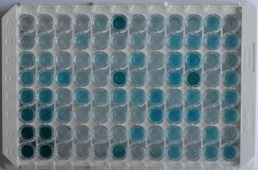Packages (Simulation)

Reagent Preparation

Image (I)
Image (II)
Certificate


ELISA Kit for Chitinase-3-like Protein 1 (CHI3L1)
GP39; CHI3-L1; YKL40; Chondrex; Chitinase 3-Like 1; Chondrocyte Protein YKL40; 39 kDa synovial protein
- Product No.SEB463Hu
- Organism SpeciesHomo sapiens (Human) Same name, Different species.
- Sample Typeserum, plasma, tissue homogenatesand other biological fluids
- Test MethodDouble-antibody Sandwich
- Assay Length3h
- Detection Range3.12-200ng/mL
- SensitivityThe minimum detectable dose of this kit is typically less than 1.12ng/mL.
- DownloadInstruction Manual
- UOM 48T96T 96T*5 96T*10 96T*100
- FOB
US$ 466
US$ 665
US$ 2993
US$ 5653
US$ 46550
For more details, please contact local distributors!
Specificity
This assay has high sensitivity and excellent specificity for detection of Chitinase-3-like Protein 1 (CHI3L1).
No significant cross-reactivity or interference between Chitinase-3-like Protein 1 (CHI3L1) and analogues was observed.
Recovery
Matrices listed below were spiked with certain level of recombinant Chitinase-3-like Protein 1 (CHI3L1) and the recovery rates were calculated by comparing the measured value to the expected amount of Chitinase-3-like Protein 1 (CHI3L1) in samples.
| Matrix | Recovery range (%) | Average(%) |
| serum(n=5) | 84-96 | 90 |
| EDTA plasma(n=5) | 80-98 | 90 |
| heparin plasma(n=5) | 98-105 | 101 |
Precision
Intra-assay Precision (Precision within an assay): 3 samples with low, middle and high level Chitinase-3-like Protein 1 (CHI3L1) were tested 20 times on one plate, respectively.
Inter-assay Precision (Precision between assays): 3 samples with low, middle and high level Chitinase-3-like Protein 1 (CHI3L1) were tested on 3 different plates, 8 replicates in each plate.
CV(%) = SD/meanX100
Intra-Assay: CV<10%
Inter-Assay: CV<12%
Linearity
The linearity of the kit was assayed by testing samples spiked with appropriate concentration of Chitinase-3-like Protein 1 (CHI3L1) and their serial dilutions. The results were demonstrated by the percentage of calculated concentration to the expected.
| Sample | 1:2 | 1:4 | 1:8 | 1:16 |
| serum(n=5) | 82-96% | 79-97% | 83-102% | 98-105% |
| EDTA plasma(n=5) | 78-96% | 85-94% | 84-97% | 78-90% |
| heparin plasma(n=5) | 80-94% | 78-101% | 78-95% | 92-99% |
Stability
The stability of kit is determined by the loss rate of activity. The loss rate of this kit is less than 5% within the expiration date under appropriate storage condition.
To minimize extra influence on the performance, operation procedures and lab conditions, especially room temperature, air humidity, incubator temperature should be strictly controlled. It is also strongly suggested that the whole assay is performed by the same operator from the beginning to the end.
Reagents and materials provided
| Reagents | Quantity | Reagents | Quantity |
| Pre-coated, ready to use 96-well strip plate | 1 | Plate sealer for 96 wells | 4 |
| Standard | 2 | Standard Diluent | 1×20mL |
| Detection Reagent A | 1×120µL | Assay Diluent A | 1×12mL |
| Detection Reagent B | 1×120µL | Assay Diluent B | 1×12mL |
| TMB Substrate | 1×9mL | Stop Solution | 1×6mL |
| Wash Buffer (30 × concentrate) | 1×20mL | Instruction manual | 1 |
Assay procedure summary
1. Prepare all reagents, samples and standards;
2. Add 100µL standard or sample to each well. Incubate 1 hours at 37°C;
3. Aspirate and add 100µL prepared Detection Reagent A. Incubate 1 hour at 37°C;
4. Aspirate and wash 3 times;
5. Add 100µL prepared Detection Reagent B. Incubate 30 minutes at 37°C;
6. Aspirate and wash 5 times;
7. Add 90µL Substrate Solution. Incubate 10-20 minutes at 37°C;
8. Add 50µL Stop Solution. Read at 450nm immediately.
GIVEAWAYS
INCREMENT SERVICES
-
 Single-component Reagents of Assay Kit
Single-component Reagents of Assay Kit
-
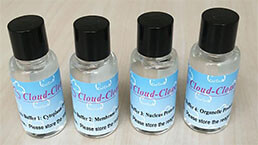 Lysis Buffer Specific for ELISA / CLIA
Lysis Buffer Specific for ELISA / CLIA
-
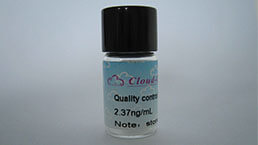 Quality Control of Kit
Quality Control of Kit
-
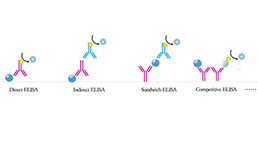 ELISA Kit Customized Service
ELISA Kit Customized Service
-
 Disease Model Customized Service
Disease Model Customized Service
-
 Serums Customized Service
Serums Customized Service
-
 TGFB1 Activation Reagent
TGFB1 Activation Reagent
-
 Real Time PCR Experimental Service
Real Time PCR Experimental Service
-
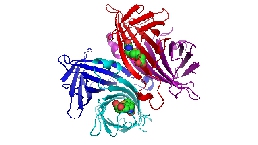 Streptavidin
Streptavidin
-
 Fast blue Protein Stain solution
Fast blue Protein Stain solution
-
 Single-component Reagents of FLIA Kit
Single-component Reagents of FLIA Kit
-
 Streptavidin-Agarose Beads
Streptavidin-Agarose Beads
| Magazine | Citations |
| Molecular and Cellular Biochemistry | Serum YKL-40: a potential biomarker for psoriasis or endothelial dysfunction in psoriasis? Pubmed:25421412 |
| BMC Pulmonary Medicine | YKL-40 is correlated with FEV1 and the asthma control test (ACT) in asthmatic patients: influence of treatment Pubmed:25578181 |
| International Journal of Rheumatic Diseases | Assessment of pulsed electromagnetic field therapy with Serum YKL‐40 and ultrasonography in patients with knee osteoarthritis PubMed: 25955771 |
| Respiratory Research | YKL-40 expression in chronic obstructive pulmonary disease: relation to acute exacerbations and airway remodeling Pubmed:27013031 |
| United States Patent Application | Compositions and Methods for Diagnosing Lung Cancer y2016:0077095.html |
| Chronic obstructive pulmonary disease (COPD)--from biomarkers to clinical phenotypes ISBN:978-951-51-4039-5 | |
| EYE | YKL-40 is a local marker for inflammation in patients with pseudoexfoliation syndrome Pubmed: 30560917 |
| European Review for Medical and Pharmacological Sciences | Astrocytes induce proliferation of oligodendrocyte progenitor cells via connexin 47-mediated activation of Chi3l1 expression Pubmed: 31002152 |
| International journal of molecular sciences | Differences in Osteoimmunological Biomarkers Predictive of Psoriatic Arthritis among a Large Italian Cohort of Psoriatic Patients Pubmed: 31717649 |
| Research square | Oligodendrocyte Progenitor Cells Increase Chi3l1 Secretion in Exosome to Activate Myh9 and Promote Proliferation through Connexin47 Connected to … |
| International Journal of Chronic Obstructive Pulmonary Disease | High Blood Eosinophil and YKL-40 Levels, as Well as Low CXCL9 Levels, are Associated with Increased Readmission in Patients with Acute Exacerbation of Chronic Obstructive Pulmonary Disease 33814903 |

